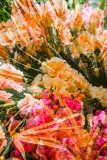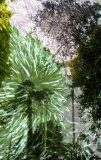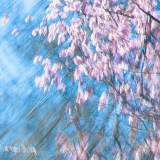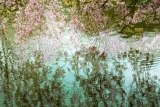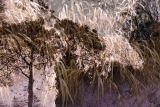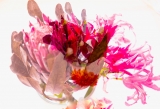Works
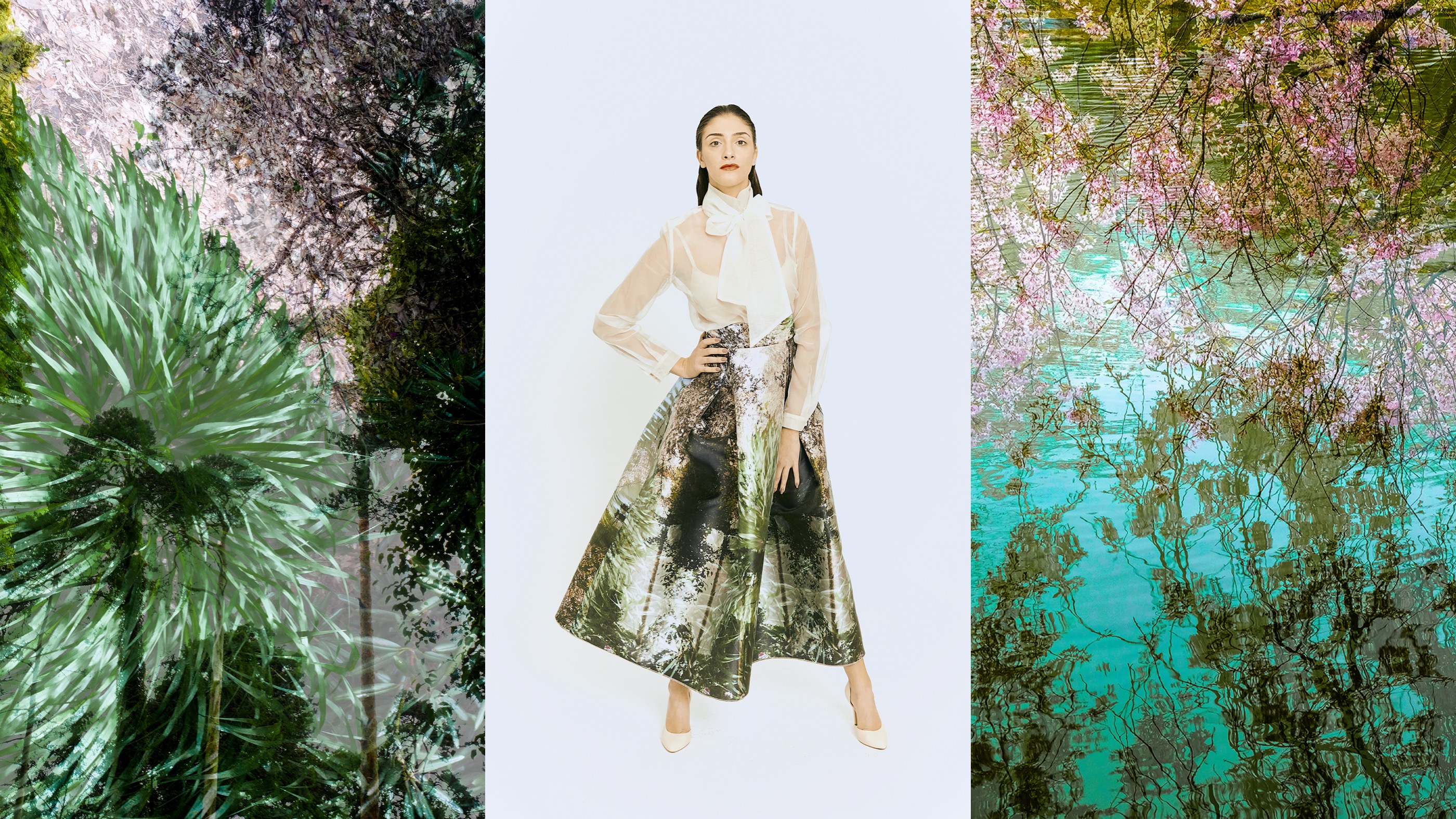
Diemut von Funck + Barbara Weigand
Art meets Fashion
Barbara Weigand, owner of the IOSOY brand, is launching an artist edition of her couture series Easyglam at the opening of the 2021 season. The first Artist Edition was created together with the photo artist Diemut von Funck, whose high-contrast and color-intensive double-exposed photographs were transferred to fabric. These take the viewer into light-drenched sceneries in parks and gardens. The transparency and color of the plant motifs are reminiscent of the representation of sensual nature experiences in French Impressionism and Japonism. In addition to selected pieces from the Easyglam Couture series, the exhibition will also show nine large-format fine art prints by Diemut von Funck.
22 July 2020 – 25 July 2020
On 22 July beginning at 5 p.m. all are invited to the opening reception at the gallery. The official distance and hygiene rules apply. Diemut von Funck and Barbara Weigand are present.
The following works are presented in the show:
Art meets Fashion
Barbara Weigand, owner of the IOSOY brand, is launching an artist edition of her couture series Easyglam at the opening of the 2021 season.
The first Artist Edition was created together with the photo artist Diemut von Funck, whose high-contrast and color-intensive double-exposed photographs were transferred to fabric. The base material is an exquisite duchesse fabric from the Spanish company Gratacos, well-known for its haute couture fabrics. This type of fabric is also called Mikado, of which the most striking property is lightness with a standing feel.
Barbara Weigand sees the transparency and disclosure of the production as a quality feature for her sustainable products, which she produces with the support of small businesses and manufacturers. As CDO of the high-tech platform AMUI, she supports traditional handicrafts, which can survive that way in the future.
The lyricism of the photographs, combined with the wide-falling A-line cut, varying through the arrangement of the pleats, makes the glamor skirts in particular a Gesamtkunstwerk of this art edition.
The fine art prints by Diemut von Funck, also presented in the exhibition, are available in a limited edition of 10 copies, each numbered and signed by the artist. The prints were produced using a nine-color pigment printing technique on William Turner watercolor paper, whose fine grain emphasizes the delicate layering of the double exposures. Glassless frames made of wenge wood round off the compositions as a whole.
The careful selection of suitable printing paper is closely linked to Diemut von Funck’s family history. Her maternal ancestors include the culturally versatile paper manufacturer Johann Wilhelm Zanders, who took over the Schnabelsmühle in 1829, a paper mill founded in the 16th century at the Strunderbach in Bergisch Gladbach. The well-known products of the company that still exists today include high-quality, quarrelsome artist papers, which are sold under the name and coat of arms of the Gohrsmühle, which was bought in 1868.
The artist’s formative childhood memories include various types of paper in terms of feel and texture, as well as botanical magazines, which inspired her to put together her own booklets with the Zanders papers. In 2008 she finally revived her creative streak and completed a three-year apprenticeship at the Prague Photo School in Linz/Austria.
Her double-exposed photographs take the viewer into light-drenched sceneries in parks and gardens. The transparency and color of the plant motifs are reminiscent of the representation of sensual nature experiences in French Impressionism and Japonism. In connection with the glossy, reflective texture of the fabrics, the vegetative image structures appear virtually dematerialized of bewitching effect.
